Icy Inverts Cruise 2013 - Shipboard Blog - Dec 16th to Dec 18th
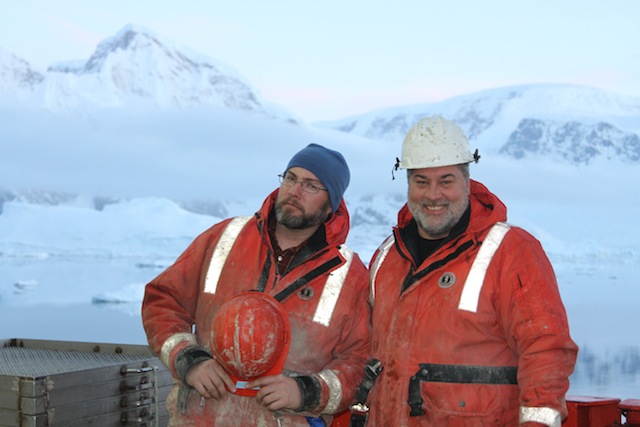
18 Dec 2013 - Near southern tip of South America (Tierra del Fuego) (54o 55.3` S 64o 58.1` W)
One month ago today, I (see above image right) left Central Michigan University in Mount Pleasant, MI en route to Punta Arenas, Chile to board the Antarctic Science Research Vessel Laurence M. Gould. Since then, we’ve collected a multitude of benthic invertebrate and plankton samples to bring back to our respective laboratories in the U.S. to analyze using a number of genetic and genomic techniques.
What we’re up to now? As we were pulling away from the Antarctic continent and heading north, we spent our first day packing our gear and samples to be shipped back to us when we disembark the ship. Some of the samples will be shipped via air (COMAIR) and some via ship transport (COMSUR). The COMAIR samples (specimens, some equipment) will arrive in our respective labs (Auburn University or Central Michigan University) in mid-January. The COMSUR items (some samples, other non-essential equipment) will get back to us likely in about three months (March, 2014).
After completing the packing and associated paperwork, we’ve had down time. Its amazing how bored people can get when you have nothing to do after working such long hours for a full month. People are spending their time watching movies, reading some books, and sleeping. Those of us who worked the midnight to noon shift very much appreciate this extra time to help us readjust to a normal day/night schedule.
Since we are only about an hour from being out of the Drake Passage, and as I look out the porthole of my stateroom, I can see South America, I feel inclined to say that our team (B-281 according to the US National Science Foundation) has to be one of the luckiest ever. In the past year on our two trips south, we’ve had five crossings of the Drake Passage and all have been extremely smooth. Never did I think we would ever get that lucky.
It’s been an incredible and highly productive trip. We’ll have a number of new species to describe, some new data to help us look at the genomes and transcriptomes of some of our target organisms, and most importantly, we’ve developed a number of new collaborations among members of our team that will pave our paths into the future of our respective research programs.
The big question now becomes one of how and when can we come back for more work down here? Every trip is an experience of a lifetime (see below image), and every trip ends with me thinking to myself….when can I come back? That time cannot come soon enough.
Contributed by: Dr. Andrew Mahon, Co-Principle Investigator, Central Michigan University
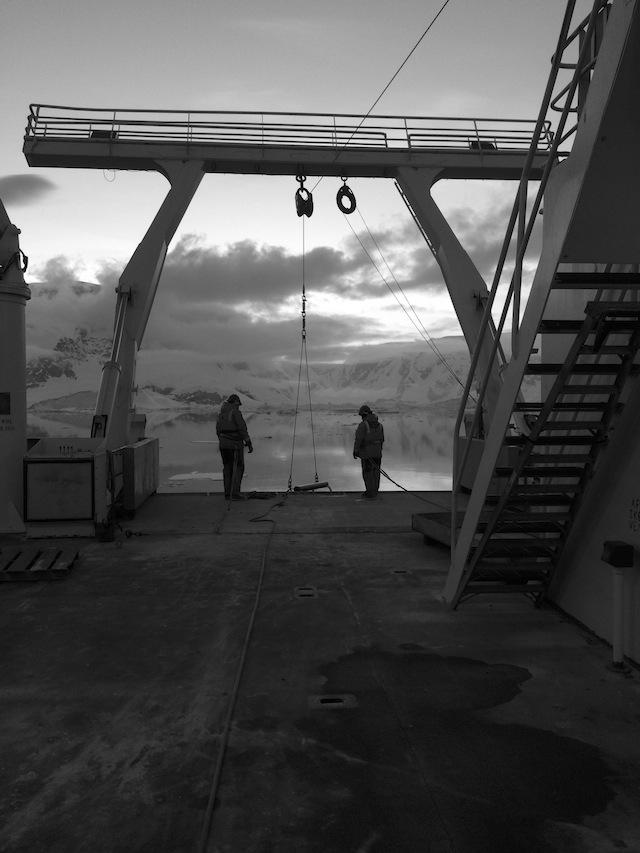
***************************************************************************************
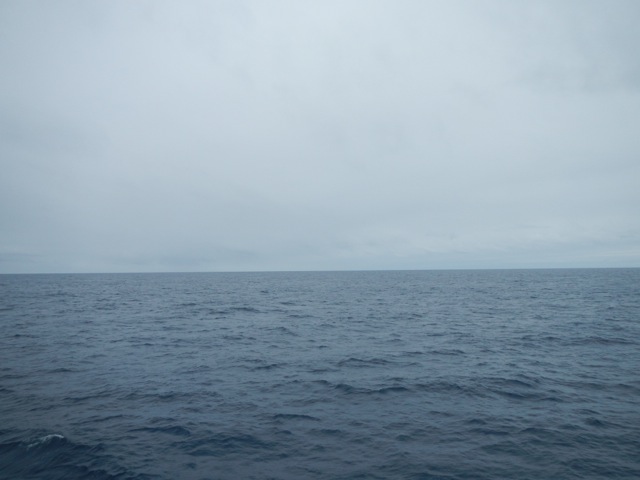
17 Dec 2013 – In the Drake Passage (-60o 27` S 63o 40` W)
I can’t believe how quickly the last month went by. It seems like just yesterday we were setting up the labs and now they are all packed up and secured. We’re currently in the Drake Passage on our way back to Punta Arenas. The Drake is often referred to as one of the roughest bodies of water in the world, but right now it is more like “Lake Drake” (I’m knocking on wood as I type this) (see above image). Other than being a little overcast, we have been having great weather. We said our goodbyes to land yesterday evening and won’t see southern Chile for about another 24 hours at the time of writing this. Even after that, we’ll have another day of transit before we arrive in Punta Arenas.
Mealtime conversations have started to shift from discussions of invertebrate biology and evolution to what we’re going to be doing for the upcoming holidays and when we will have to go back to work afterwards. It’s also been nice getting to know some of the researchers who came aboard at Palmer Station and are on their way home as well.
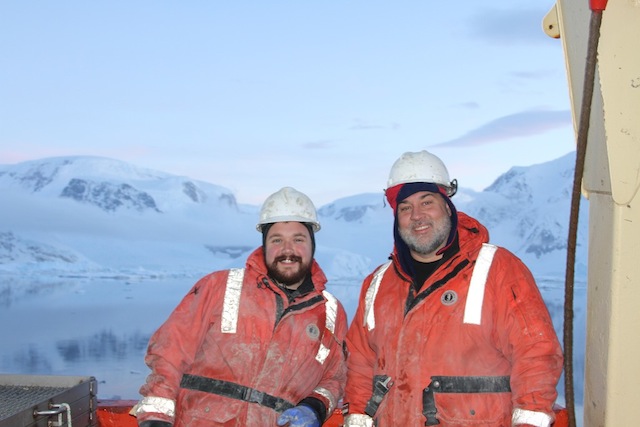
Otherwise most of the scientific staff are relaxing in the lounge watching movies, going out on the bow to do a little whale watching, working on manuscripts, catching up on e-mail, uploading photos to the shared network hard drive (a couple of my favorites are above and below) or working on digitizing the book where we recorded all of our specimen collection data.
Contributed by: Dr. Kevin Kocot, Postdoctoral Researcher, Auburn University
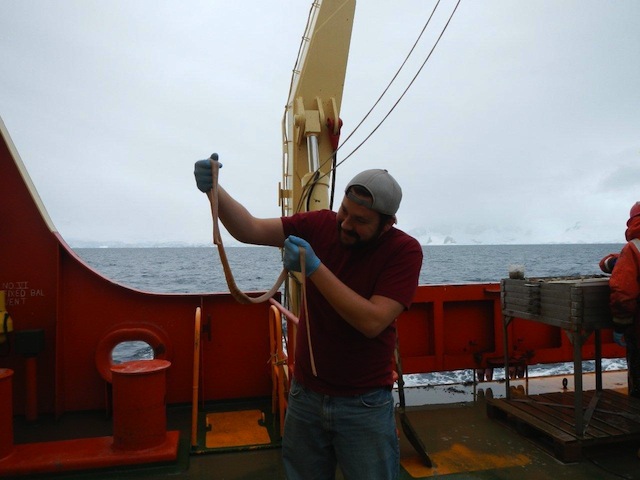
***************************************************************************************
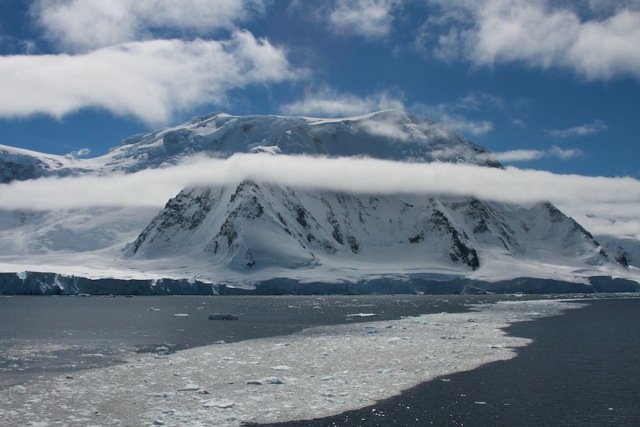
16 Dec 2013 - Entering the Drake Passage (64o 17.26` S 62o 46.44` W)
Last night we had a nice stop over at Palmer Stations. After taking on 11 additional passengers and 5 cargo vans, we are turning north to Punta Arenas. One of the passengers, Allyson Comstock, is a fellow Auburn University faculty member. She is participating in a National Science Foundation (NSF) program that brings artists to the Antarctic and promotes art inspired by science. As we are leaving Antarctica, we are getting a few last reminders about the Antarctic. Yet again, ice was making itself known as winds and currents pushed more ice to Palmer Station. We got out, but it was thick ice for the area given it is mid-December. Another reminder was the shear beauty and majestic nature of the landscape. We went through the Neumayer Passage with sizable snow covered mountains rising on either side, blue sky above, and light clouds hovering halfway up the mountains (see above image). We saw several cruise ships on the way out. “People on those ships paid thousands of dollars to do this, but I am getting paid to do it!,” I chuckled to myself.
One of the goals of our work is looking at the genetics of these animals. Specifically, we want to understand how different populations of various Antarctic species are connected. This is extending work from a previous NSF grant where we sampled animals on both sides of the Drake Passage. We have found that some animals, like the ribbon worm Parborlasia corrugatus (see below image) appear to have one population over 8000km, that is half way around the Antarctic! Others, like the isopod crustacean Ceratoserolis trilobitoides and the sea star Odontaster validus, have turned out to have multiple different genetic lineages. Thus, they represent multiple species and not just one. Biodiversity of the Antarctic is much greater than traditionally understood. To conduct the genetic work, we will take the animals back to our labs, extract their DNA and look at various genetic markers. Previously we have amplified the DNA and sequenced just one or two genes to analyze genetic patterns in the Southern Ocean. However, in the past few years, our ability to look at the genomes of organisms has changed vastly. For model animals, such as mice or fruit flies, the entire genome has been decoded. This is not the case for most organisms, but advances in technology are now allowing access to this untapped information so that we can make better assessments of species boundaries. One big advantage is that looking at more genes allows us to understand the patterns with fewer individuals. This 3-week collecting trip will supply us with samples for the next few years. Now to get back to the lab!
Contributed by: Dr. Ken Halanych, Professor, Auburn University
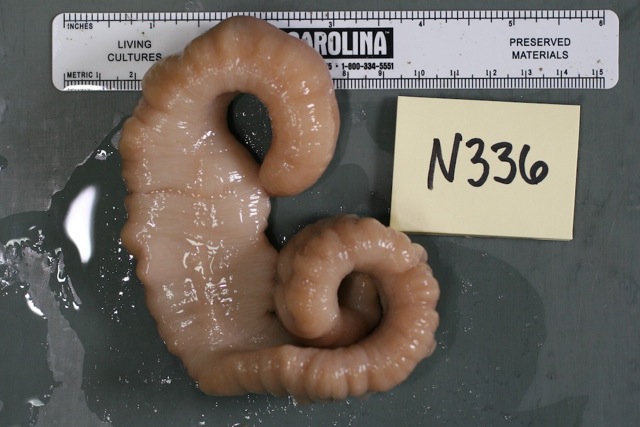
Last updated: 12/18/2013
